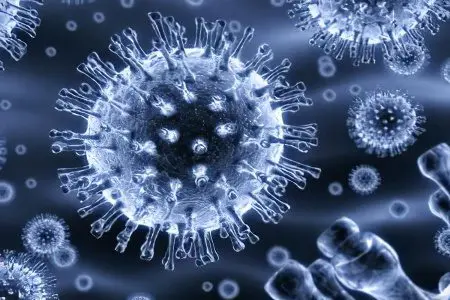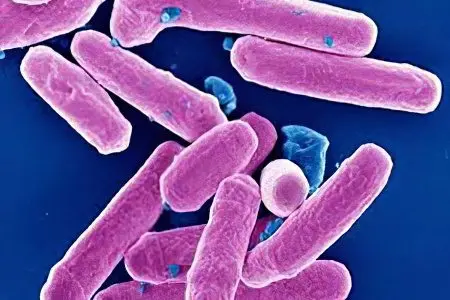Contents
- Food poisoning as a cause of nausea, diarrhea, vomiting and fever
- Intestinal infection as a cause of nausea, diarrhea, vomiting and fever
- Diseases of the digestive tract, as a cause of nausea, diarrhea, vomiting and fever
- Dangerous Symptoms
- When should you see a doctor?
- First aid for diarrhea, vomiting and fever
- Other methods of treatment
A person’s nausea, vomiting with diarrhea, and fever most often suggest that they have food poisoning. In fact, the causes of this condition can also be reduced to an intestinal infection (damage to the body by a viral or bacterial flora) or to diseases of the digestive tract.
Food poisoning as a cause of nausea, diarrhea, vomiting and fever

Food poisoning develops in a person when foods that contain toxins enter the body. They are produced by the pathogenic flora that inhabited this same food product.
The first signs of poisoning appear after a few hours from eating a dangerous dish.
Its main symptoms will be as follows:
Nausea.
Vomiting.
Diarrhea.
Spasms in the abdomen.
An increase in body temperature up to 37-40 ° C.
Weakness.
Pale skin.
First, a person begins to feel sick, after which he starts vomiting. It is aimed at cleansing the stomach. You don’t have to stop vomiting. However, if the attack is prolonged and indomitable, then you need to seek medical help. Such vomiting is the reason for the appointment of antiemetic drugs.
When the vomiting is over, the person should feel better. This will increase weakness, the skin will become pale. During this period, you need to start taking absorbent drugs, for example, activated carbon, Enterosgel. For gastric lavage, a weak solution of potassium permanganate can be used. In small doses, it is possible to use infusions of medicinal herbs (St. John’s wort or chamomile).
Diarrhea, like vomiting, is aimed at cleansing the body of toxins. It allows you to remove harmful substances from it. Fecal masses will change their usual color.
When a person develops diarrhea, they will feel spasms along the bowel. Sometimes they persist for some time after the diarrhea ends. Diarrhea leads to dehydration of the body, so patients are shown taking Regidron.
The higher the body temperature, the more severe the food poisoning. If it does not exceed subfebrile marks, then the poisoning is insignificant. When the body temperature reaches 38 ° C, you need to seek medical help, as this indicates an acute toxic infection.
Mild to moderate food poisoning does not require hospitalization. To reduce body temperature, you need to take antipyretic drugs, and to destroy toxins in the intestines – nitrofurans.
If a person’s health worsens, he develops a fever, headaches appear, his heart rate suffers, vision problems arise, he must be urgently hospitalized.
Children suffer poisoning more severely than adults, since the child’s immunity is not yet strong enough. That food poisoning, which in an adult will only cause liquefaction of the stool, in a child may be accompanied by severe diarrhea and vomiting.
If the child has signs of food poisoning and the body temperature rises, it is necessary to call a medical team. This condition is a reason for emergency hospitalization. Alternatively, you can do an enema with salted water. Why dissolve a tablespoon of salt in a liter of water.
Intestinal infection as a cause of nausea, diarrhea, vomiting and fever

Vomiting, diarrhea, and high body temperature are often symptoms of an intestinal infection. It can be caused by bacterial or viral flora. The disease is difficult to tolerate, so you need to start treatment as soon as possible. To establish which infectious agent struck the intestines, it is required to pass an analysis of feces, urine and blood. Sometimes vomit is collected. Depending on the type of pathogen, the doctor will prescribe the appropriate treatment.
Most often, an intestinal infection develops in the following cases:
Rotavirus infection.
Infection with bacteria of the genus Shigella.
Salmonella infection.
In addition, high body temperature with diarrhea and vomiting may indicate viral hepatitis.
Rotavirus infection

Rotavirus infection is called the intestinal flu. The disease develops when microorganisms from the rotavirus family enter the human body, but they have nothing to do with influenza viruses. The disease was named so because of the similarity of the main symptoms. With rotavirus infection, a person experiences vomiting, high body temperature, headaches, diarrhea, cough, sore throat, runny nose, weakness increases. The route of infection is fecal-oral.
Fecal masses begin to resemble clay in their consistency. They change their natural color to grayish yellow. Blood streaks may be found in the stools. Children are more likely than adults to suffer from rotavirus infection. They take it harder. As a rule, the pathology is accompanied by vomiting and diarrhea. Against the background of high body temperature, this threatens with dehydration. In this case, you should immediately seek medical help. The first rotavirus infection is especially acute. After that, antibodies are produced in the body, which form further immunity. This does not mean that infection will never happen again, but the next time the infection will be easier to carry.
There is no drug that would specifically destroy rotaviruses. Parents will have to direct efforts to combat the main symptoms of the disease. It is important to water the child, give him enterosorbents that the doctor will prescribe.
It must be remembered that rotavirus infection is contagious, so you need to be careful in contact with the patient.
Dysentery

Dysentery is caused by bacteria from the genus Shigella. They enter the large intestine and damage it. You can become infected with dysentery by drinking contaminated water and food, as well as from a sick person. The first symptoms of dysentery will appear 2-7 days after the contact.
A person has headaches, lethargy increases, body temperature rises, which causes abdominal cramps. After a short time, diarrhea develops, the temperature reaches 39 ° C, the skin becomes pale, the tongue is dark. The heart begins to beat faster, blood pressure drops.
A person has 20-50 stools per day. As the disease progresses, it will consist of mucus, pus, and blood. Dysentery lasts 3-4 weeks. The disease is dangerous by the development of peritonitis and paraproctitis.
If the infection has an uncomplicated course, then the patient is transferred to the treatment table No. 4, they give him nitrofurans, oxyquinolines. When the disease is severe, the appointment of several antibacterial drugs is required at once.
salmonellosis

Salmonellosis is caused by bacteria of the genus Salmonella. Infection occurs by eating contaminated foods, or by contact with a sick person or animal.
The disease has an acute onset, the infected person’s body temperature rises sharply, chills join. The patient is very sick and vomits, his head hurts.
The stool becomes watery, it happens very often. Fecal masses become green, bile is visible in them. Similar symptoms persist for 8-10 days. In addition, the patient complains of aching joints. On palpation, the doctor notices an increase in the size of the spleen and liver.
A patient with salmonellosis is hospitalized in a separate room. An accurate diagnosis can be made by conducting laboratory tests. Therapy is reduced to taking penicillin, fluoroquinolones, bacteriophages. If there is no blood in the stool, then you can do without the appointment of antibacterial drugs.
During the entire recovery period, the patient is shown to drink plenty of fluids, which will prevent dehydration. In parallel, he should take enterosorbents and prebiotics.
The complications of the disease include:
Toxic shock.
Inflammation of the peritoneum.
Polyarthritis.
Renal failure.
Viral hepatitis

Hepatitis is accompanied by liver damage. The first symptoms of the disease may appear 7 days to 6 months after the infection enters the human body. The clinical picture depends on which virus caused the infection (A, B, C, D, E, F, G). Infection occurs when drinking contaminated water, when eating contaminated food, when using shared syringes, and through unprotected sexual contact.
First, a person’s body temperature rises, pains appear in the upper abdomen. Then the joints begin to break, the head hurts, the appetite disappears. The next symptom of hepatitis is diarrhea with severe bloating. The skin starts to itch.
The liver and spleen increase in size, the urine becomes dark, and the feces are light, the skin and eye sclera turn yellow. At the same time, the patient’s state of health improves slightly.
Depending on the immunity of a person, the disease can have both mild and severe course.
There is no treatment for hepatitis A. A person is hospitalized, he is given plenty of fluids and bed rest. To reduce pain, antispasmodics are indicated. If the intoxication of the body is strongly expressed, then the patient is prescribed choleretic drugs, intravenously administered detoxification solutions.
Other types of hepatitis virus lead to severe consequences. Patients will require the introduction of interferons and antiviral drugs. Proper and timely treatment leads to the fact that it is possible to achieve a stable remission. The patient is forbidden to take alcohol for a long time.
Complications of hepatitis:
Cirrhosis of the liver.
Necrosis of organ tissues.
Liver cancer.
Chronic diseases of the gallbladder.
Diseases of the digestive tract, as a cause of nausea, diarrhea, vomiting and fever

Most diseases of the digestive system are manifested by nausea, pain, vomiting, and loose stools. The most common pathologies include pancreatitis, gastritis, ulcers, gastroduodenitis.
Pancreatitis is an inflammation of the pancreas. It can begin against the background of the abuse of alcoholic beverages, with serious errors in nutrition. Such causes of the development of pancreatitis are more characteristic of the male sex. In women, the inflammatory process occurs mainly during dieting, as well as against the background of hormonal imbalance in the body.
The first sign of pancreatitis is vomiting. It will contain bile. In addition, the person will begin to suffer from severe pain in the upper abdomen. Then diarrhea joins, body temperature may rise. If the disease has a mild or moderate course, then there is the possibility of outpatient treatment. When the body temperature rises to 38 ° C and above, hospitalization of the patient is required.
Any disease of the digestive system can pose a serious threat to human life and health, therefore, when the first signs of a disorder appear, it is necessary to seek medical help.
Dangerous Symptoms

It is possible to single out the most dangerous symptoms of a health disorder that require immediate consultation with a doctor.
These include:
Sudden onset of nausea, which is accompanied by bloating, diarrhea, weakness and fever up to 37,5 ° C. These symptoms may indicate food poisoning. To improve well-being, you need to induce vomiting, rinse the stomach, and also seek medical help. If you managed to cope with the violation on your own, then after cleansing the stomach, you need to take several tablets of activated carbon (1 tablet per 10 kg of a person’s weight).
Rising body temperature, diarrhea with blood and mucus, vomiting, weakness. These symptoms may indicate an intestinal infection. If the stool becomes light, the urine is dark, and the skin becomes yellowish, hepatitis can be suspected. Without the help of a doctor, it will not be possible to cope with the problem.
The appearance of light-colored feces, nausea with a sour taste, vomiting with bitterness in the mouth, high body temperature. These symptoms may indicate developing pancreatitis. Similar symptoms are manifested by a stomach ulcer and inflammation of the gallbladder. Such pathologies require emergency medical care, as they pose a direct threat to human life and health.
Diarrhea, nausea and vomiting accompany many diseases of the gastrointestinal tract. Sometimes they occur with elevated body temperature, and sometimes it remains within the normal range. If during the period of exacerbation of the disease a person was not provided with high-quality medical care, then the pathology can become chronic. Dealing with it will be more difficult. Therefore, even mild, but often occurring nausea and vomiting is a reason for a comprehensive examination.
When should you see a doctor?

If diarrhea, vomiting, nausea and other health problems do not go away during the day, then self-treatment should be forgotten. This is especially true in a situation where a person’s body temperature rises, and blood appears in the feces or vomit. In such a situation, you need to call an ambulance, or go to the hospital yourself.
Emergency medical attention is needed in the following situations:
Diarrhea and vomiting do not stop for more than 1-2 days.
Body temperature rises to high levels.
Blood and mucus are visible in the stools and vomit.
The person is in severe pain.
Symptoms of dehydration of the body appear: the mouth dries up, you are constantly thirsty, weakness and dizziness increase.
Vomiting and diarrhea develops in a child, or in a woman in position.
In one family, several people fell ill at once.
To establish a diagnosis, the doctor will prescribe the following studies to the patient:
Donation of blood and urine for a general analysis.
Analysis of feces for helminth eggs.
BAC stool culture.
Coprogram.
Ionogram.
Functional renal tests.
Instrumental diagnostics is reduced to the implementation of the following techniques: irrigoscopy, colonoscopy, sigmoidoscopy, ultrasound. Only according to the results of a comprehensive diagnosis will it be possible to find the exact cause of the ailment and prescribe treatment.
First aid for diarrhea, vomiting and fever

First aid to the patient is not aimed at completely ridding the person of the disease, but at making him feel better.
Recommendations for first aid for a patient with diarrhea, vomiting and nausea:
Take adsorbents. The most famous drug is the domestic Enterosgel and analogous activated carbon. For every 10 kg of weight, you will need to take 1 tablet of the drug. Adsorbents are taken in a situation where a person has poisoning or an intestinal infection. After taking the drug, you need to make sure that the person has a chair no later than 5 hours later. Otherwise, all harmful substances will be absorbed into the blood.
Take an antispasmodic. These drugs allow you to stop pain and spasms in the intestines, in the gallbladder, liver, etc. These drugs include: No-shpa, Duspatalin, etc.
Rinse the stomach. If a person knows for sure that he has had a poisoning, then you need to rinse the stomach. To do this, drink 8 glasses of a weak solution of potassium permanganate and induce vomiting. Repeat the procedure until only pure water comes out of the stomach, without pieces of food. If after washing the stomach it does not get better, then you need to consult a doctor.
There are some conditions for a speedy recovery, which include:
You should not take any medication to stop diarrhea unless prescribed by a doctor. The body fights intestinal infection on its own, by removing pathogenic flora from the organ along with feces. If a person takes a drug to stop diarrhea, this process will stop. The bacteria will remain in the intestinal lumen and begin to be absorbed by the blood, and with its current it spreads throughout the body. This is the basis for the development of severe complications. You can take activated charcoal or Smecta on your own.
To speed up the process of removing harmful flora from the body, you can put an enema.
Be sure to drink as much water as possible to prevent dehydration.
Self-medication can be hazardous to health.
A person with an intestinal disorder needs help and proper care.
During illness, bed rest should be observed. If vomiting does not stop, then next to the bed you need to put a basin or other suitable container.
Other methods of treatment

In case of poisoning, you can take activated charcoal. This drug is sold in pharmacies without a prescription and costs about 10-15 rubles per pack. However, it is forbidden to take it with a stomach ulcer, or if internal bleeding is suspected. Before starting treatment, you need to consult a doctor, since activated charcoal removes not only harmful, but also beneficial flora from the body.
Other drugs to stop and treat diarrhea and vomiting:
Smecta For the first dose, dilute 2 sachets of the drug in 1/2 cup of warm boiled water. Then the dose is reduced to 1 sachet. Between taking the drug should take at least an hour. It is forbidden to use Smecta to treat people with constipation. The drug is released without a prescription. The cost of 1 sachet is 20 rubles.
Phthalazole. The drug is taken 1 tablet every 2-3 hours. Improvement occurs approximately on the 3rd day of treatment. It is forbidden to take the drug to people with individual intolerance to its components, patients with disorders in the hematopoietic system, children under 3 years old, patients with hepatitis and renal failure, during pregnancy and lactation. The cost of packaging in 10 tablets is 10-15 rubles. The drug is dispensed without a prescription.
Furazolidone. This is an antibiotic that needs to be taken 4 times a day. The course of treatment is 7 days. Contraindications to treatment: renal failure, liver pathology, age under 3 years, pregnancy and lactation, hypersensitivity to ethanol. The cost of the drug is 70 rubles. It is available in pharmacies without a prescription.
Imodium. This drug stops diarrhea, for which it needs to be taken once. Contraindications include: dysentery, acute intestinal poisoning, salmonellosis, breastfeeding, early pregnancy, age under 6 years. The cost of the drug is 150 rubles.
Enterol. Take the drug 1-2 tablets an hour before meals 3 times a day. Contraindications to taking Enterol: the presence of a venous catheter, allergy to the components of the drug, age less than a year. Pregnant and lactating women should start treatment only after medical consultation. The cost of the drug is 300 rubles. It is released without a prescription.
To eliminate the acute symptoms of poisoning, a single dose of the drug is sufficient. In the future, the dose is reduced. Before starting treatment, you need to carefully study the instructions. If the diarrhea is acute or chronic, then you should not prescribe medications yourself. This should be done by a doctor.
Another important rule that must be followed during diarrhea and vomiting is the observance of an adequate drinking regimen. The body will quickly lose fluid, which threatens with dehydration.
During the day you need to drink plain boiled water. Its daily volume should not be less than 3 liters. It is permissible to take mineral water without gas, apple or carrot juice diluted by half with water, dried fruit compote, herbal decoctions. Such drinks not only replenish the lost volumes of fluid, but also enrich the body with useful substances.
To prevent dehydration, take a solution of Regidron. If the drug is not at hand, then a similar composition can be prepared independently. In a liter of warm boiled water, you need to dissolve a teaspoon of soda and salt and 5 tablespoons of sugar. Take this solution in small portions, but every 15 minutes.









